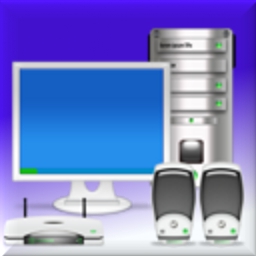DeAnza College/CIS2/Summer 2011/Group 6
CIS 2 Computers and the Internet in Society SUMMER 2011 Final Projects
Global Economic Integration
"Thanks to ever-advancing technology, information is now readily available in almost every shape and form to enable transparency and accountability to function to their full effectiveness."
Andrew Sheng, author: From Asian To Global Financial Crisis
Introduction
Global economic integration began at a very early time. Thousands of years ago, Western countries began to use the power of the vessel for the exchange of goods to Eastern countries. At that time, because of undeveloped communications, dealers spent a lot of time, sometimes months, passing information. Therefore, all transactions were conducted in traditional ways. Over time, people needed a more efficient way of exchanging information.
The advent of the computer brought about a qualitative leap in global economics. Information transmissions were no longer limited by distance. Computers not only convenience information transmission, they also improve the efficiency of economic activity, such as product design, product transportation, raw material acquisition, and so on. People no longer rely, solely, on traditional means for complex operations, instead, they are using computers for all these calculations.
What's new what's not?Federal Reserve Chairman Ben Bernanke on Global Economic Integration
Transitioning old systems
To transition an organization from traditional paper-based documentation requires a deep understanding of their objectives, standards of performance, and internal controls. Companies that digitized their old paper, documentation system without thinking this through often produced great risk of total failure and many failed during these transitional processes. The benefits, however, of integrating IT, with a company or corporations information systems, reduce processing costs and increase output at a substantial rate.
Accounting management systems have made a dramatic impact on accuracy and risk management. Scripting, system tools, and command lines, increased, verification and reporting consistency. This altered the relationship between boards of governance, shareholders, managers, middle-men and the public.
One idea that stood out to me while reading the speech by Andrew Sheng Transparency, Information Technology and Governance was the relationship he drew between purpose and result when he said, “(Information Technology) is only a means toward an end.”
The whole idea behind finding integrated solutions is to close the task. Possibly drawing on the fears of High Speed Data processing, the Y-2k bug, the Dot-Com crash, the replacement of human tasks with automated procedures. That was the whole point of integrated solutions.
Modern business with the world wide web
"The World Wide Web (abbreviated as WWW or W3 and commonly known as the Web), is a system of interlinked hypertext documents accessed via the Internet." The father of the world wide web is Tim Berners-Lee. In 1990, he announced a proposal that he would make a viewable-web. Berners-Lee authored the hypertext mark-up language, A cross platform language that could post text and graphics in a web browser, making it possible to develop servers and clients independently and to add extensions without licensing restrictions." Later on, the Internet became a very common phrase around the globe. The World Wide Web made it convenient for working communication. People could begin to network, process, and transform data in new ways.
Improved Productivity, the benefits of IT in the organization.
Information technology (IT) plays an important role in the global economic growth. A study shows that in the United States, IT was responsible for two-thirds of total factor growth in productivity between 1995 and 2002 and virtually all of the growth in labor productivity. In most countries, IT spending grows at two to five times the rate of overall economic growth. Many people think that information technologies decrease job rates because many positions can be automated. In actuality, the IT industry, itself, creates more jobs because the industry needs people who know how to control the technology and how to improve the efficiency of IT. IT also creates more jobs for people with disabilities, and people who prefer to work at home. One of the benefits of IT is the ability to work from everywhere. People work at their home because some are more productive than they are from the office. Moreover, IT boosts product quality and makes it easier for organizations to design customized products and services.Digital Prosperity, Understanding the Economic benefits of IT
Universal Product Code
UPC is a barcode with black and white strips and a serial of number under those strips. It is used worldwide nowadays, those UPC are used for trade items or goods in stores. People can scan the code and will know the up-to-dated price at the store that time. The most popular one is UPC-A code, with 12 digit numbers under the black and white strips. The idea of using automated check in was first thought of in 1932 by Wallace Flint when he used a punch card to make a purchase. And later on it was developed by Bernard Silver and Norman Joseph Woodland to become a style bull-eye's code. However, later the bull-eye was too big and the ink sometime made mistake with the product. Laurer. Dr. Sodastrum led a group of people and made a prototype version of scanner. And in December 1, 1972, this scanner was presented to the Super Market Committee in Rochester Minnesota. In this presentation, the scanner read the UPC code easily. Laurer later continued to work with the UPC code, he was known as the father of the UPC code.Advanced ID Technologies
Radio frequency identification (RFID) is a generic term that is used to describe a system that transmits the identity (in the form of a unique serial number) of an object or person via wireless, analog, Radio waves. It's grouped under the broad category of automatic identification technologies. Technology such as RFID allows the food industry to trace products, increase the food quality and prevent outbreak of illness because it can monitor conditions that contribute to overall products quality of our foods and reduce product waste. Increasing food quality and production safety helps products meet international standards and regulations. This can make more countries over the world import and export food products. This is one of the benefits of Technology in an organization.
Learn more about Global Food Industry Technologies
"And now it's time for" the future
All around the globe, in developed and developing countries, energy is in primary demand. The United Nations Intergovernmental Panel on Climate Change (IPCC) is a partnership of scientists, technologists and economists who are facing our global issues and considering the environmental, economic and social impacts from a broad view.
Renewable energy solutions are becoming an increasingly practical solution. The cost of placing photovoltaic solar systems is comparable to building an entire grid system in a rural, undeveloped area. Technologies, such as those, that create electricity out of the ocean need further research and development before they reach commercial maturity. Meanwhile the real solution of Solar energy, along with wind power, can be implemented to drastically reduce green house gas emissions that costs global economies billions of dollars each year in health care costs alone.
Wind farms have increased by 50% while Photovoltaic, Solar cell, installations have increased 30%. In countries like China and Germany, public policies have been put into place that require the expansions of renewable energy sources. In these models, the cost efficiency and environmental impacts are astounding. If we can create supportive public policies in other areas, we can build a better climate over the next 30 years.
For an in-depth view of these issues, the IPCC and our future, read The Renewable Future by Achim Steiner, Helen Clark and Kandeh Yumkella.
References
- Sheng, A. (n.d.). . In From Asian to Global Financial Crisis. Retrieved from www.nationmultimedia.com/specials/AsianCrisis.pdf .
- Unknown Author. (n.d.). Global Economic Integration. In Globalisation. Retrieved from www.bowneglobal.com/latest/global-economic-integration.html .
- Bernanke, C. (2006, August 5). Global Economic Integration: What's New and What's Not?. In FRB: Speech. Retrieved from www.federalreserve.gov/newsevents/speech/bernanke20060825a.htm .
- Sheng, A. (1998, November 24). Transparency, Information Technology, and Governance. In Securities and Futures Commission. Retrieved from www.sfc.hk/sfcPressRelease/EN/sfcOpenDocServlet.
- Atkinson, R. & McKay, A. (2007, March 13). Digital Prosperity: Understanding the Economic Benefits of the Information Technology Revolution. In Resources and Publications. Retrieved from www.itif.org/publications/digital-prosperity-understanding-economic-benefits-information-technology-revolution .
- Conrad, B. (n.d.). How Can Information Technology Improve Productivity?. In eHow. Retrieved from www.ehow.com/way_5335891_can-information-technology-improve-productivity.html .
- Unknown Author. (n.d.). What is RFID?. In AIM. Retrieved from www.aimglobal.org/technologies/RFID/what_is_rfid.asp .
- Horowitz, B. (2011, April 19). RFID Can Help Food Industry Prevent Illness Outbreaks: Report. In Health Care IT News. Retrieved from www.eweek.com/c/a/Health-Care-IT/RFID-Can-Help-Food-Industry-Prevent-Illness-Outbreaks-Report-663998/
| Students @ Work - a student collaborative writing project. Help us by providing feedback on the Discussion page. |




